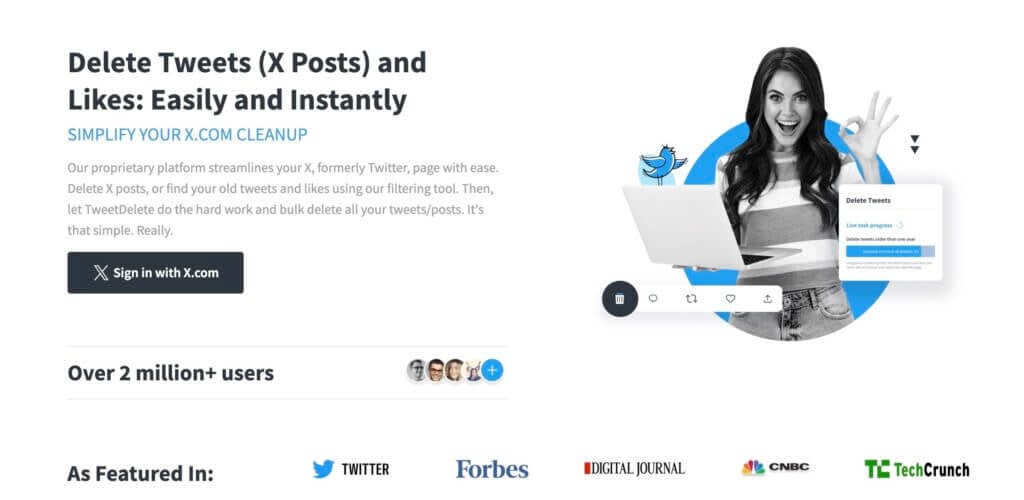How Brands Can Protect Their Image by Managing Old Tweets (X Posts)
The internet does not forget. That is both the beauty and the problem of social media. A brand can spend years building trust, posting creative campaigns, and engaging with customers. Yet one old tweet (now called an X post but we will keep calling it a tweet), pulled from the archives, can undo months of work in a matter of hours.
For social media managers, this reality is familiar. A post that once seemed harmless or even funny can look tone deaf years later. Competitors or critics can dig it up, and suddenly the brand is explaining rather than inspiring. It is no surprise that more companies are starting to treat tweet management as a serious part of their reputation strategy. Tools now even allow teams to find removed tweets easily and monitor what is left behind, which shows how important this practice has become.
Table of Contents
Why Old Tweets Still Matter

There is a common belief that yesterday’s post is forgotten by today. In practice, the opposite is often true. Old content has a way of resurfacing at the worst possible moment. A journalist preparing a profile, a rival looking for leverage, or even a customer scrolling deep into the timeline can change the conversation in minutes.
Brands have faced backlash for tweets written long before current teams were in charge. The person behind the keyboard may have moved on, but the words stay. Customers rarely separate the present from the past. They see the brand as one continuous voice.
That is why an old tweet can carry unexpected weight. It can make a brand appear inconsistent, careless, or out of touch. Cleaning up those traces is not an attempt to hide history. It is a way of making sure the public face of the company aligns with the values it holds today.
The Risk to Reputation
A brand’s reputation is fragile. It is built from trust, and even small missteps can dent that trust. When a questionable tweet reappears, the audience reacts quickly. Screenshots spread faster than apologies.
SMM managers often say that the hardest part is not the criticism itself but the distraction. Instead of focusing on current campaigns, the team spends energy managing fallout. They answer questions, write statements, and scramble to explain context. All this takes time away from actual marketing.
Reputation management is not about being perfect. It is about reducing unnecessary risks. If an old tweet no longer reflects the company, it is better to remove it than to let it hang as a potential trigger.
Tools That Make the Process Work
Deleting tweets one by one is impractical for brands with years of activity. Imagine a retail chain that has been active since 2012, posting multiple times a day. That is tens of thousands of tweets. Manual cleanup is not realistic.
This is where automation helps. Specialized tools allow managers to search for specific keywords, filter by time, or clear entire archives. Instead of scrolling endlessly, a team can focus on setting criteria that reflect their values.
Spotlight on TweetDelete

Among these tools, TweetDelete stands out for its simplicity. Brands can filter tweets by date or by word choice. They can upload a full archive and decide in minutes what should stay and what should go. The process is quick enough to be part of regular maintenance rather than an emergency fix.
The practical aspect of this is the reduction of manual work stress. SMM teams often manage numerous platforms, different deadlines, and reports. With a system working to delete old tweets, it’s one less thing to worry about. It feels like routine cleaning rather than regular management of a crisis.
Managers who have implemented TweetDelete have mentioned the feeling of relief at the conclusion of the process. Their brand’s feed looks consistent with their current voice, completely disconnected from remnants of old messages. It feels, in a sense, like brand hygiene, as natural, as if they were updating and refreshing a logo, or website.
A Strategic Approach to Social Media Cleanups
It is tempting to treat tweet deletion as a one-time purge. In reality, it works best when folded into ongoing strategy. The same way brands audit design, copy, or SEO, they can audit past social media content.
Some companies schedule quarterly reviews. Others make it part of campaign cycles. After each major product launch, they check for older posts that might contradict the new message. This habit reduces the chance of surprises later.
An SMM manager once shared that his team created a list of sensitive topics. Every six months they run a filter through the archive and delete any outdated references. It does not take long, yet it keeps the feed in line with the brand’s evolving values.
Beyond Deletion: Building Clarity

Managing old tweets is not only about defense. It also has a positive effect. A clean, focused timeline helps customers understand what the brand stands for today. It prevents confusion. It also gives more visibility to the posts that matter.
A cluttered feed can feel like walking into a store with items scattered everywhere. Customers might find what they need, but it takes effort. A cleaned-up feed feels more intentional. It shows direction. It makes people confident that the brand knows its own voice.
This clarity can even motivate the social media team. When they look at the feed, they see consistency instead of contradictions. That confidence translates into stronger campaigns.
Protecting Image Through Care
Brands inhabit a world of eternal scrutiny. Every word, every post, and every image is part of the permanent record. Mistakes are part of the human experience, but it’s not always a good idea to leave them out there for all eternity. Managing old tweets is really not so much about rewriting history as it is about creating the present.
Privacy may be the surface reason, but reputation and clarity are the deeper ones. By cleaning up outdated posts, a brand protects its image and creates space for authentic conversation. It feels less reactive and more intentional.
TweetDelete makes this process realistic. Instead of fearing what might resurface, brands can take control. They can delete with purpose, review with confidence, and show the world a timeline that reflects who they are today. That kind of care does not erase the past. It ensures the future feels lighter, clearer, and closer to the truth the brand wants to tell.